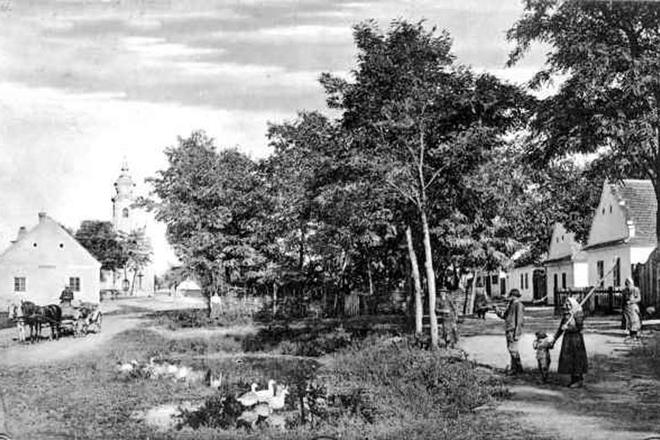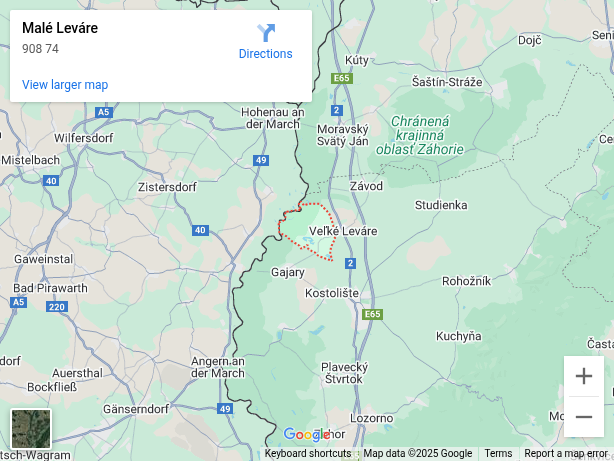This postcard, which dates from the Austro-Hungarian Empire, depicts the village of Malé Leváre, in the Záhorie region. It was published by Alfred Wiesner from Malacky, who disseminated postcards across the region.
Záhorie bordered the Hungarian kingdom during the medieval period. Malé Leváre probably developed from the small fortresses that housed shooters protecting the border near the Morava River. The origin of the town name rose from it's function; the Hungarian word lä (shooter) and vár (small shooting fortress) and the German village names of Todesdorf (settlement of death) or Kleinschutzen (klien - small, schutz - protection).
In the 16th and 17th centuries, Anabaptists – a religious protestant group known locally as Habans, and later, in North America included groups such as the Amish and Mennonites – settled in Malé Leváre and neighbouring Veľké Leváre to escape persecution in their native Switzerland.
As excellent artisans, they set up pottery centres in both villages.
Malé Leváre is worth visiting for the preserved rural architecture that is typical for the Záhorie region.
This article was first published by The Slovak Spectator on August 11, 2008. It has been updated to be relevant today.

 The village of Malé Leváre during the Austro-Hungarian Empire. (source: Branislav Chovan)
The village of Malé Leváre during the Austro-Hungarian Empire. (source: Branislav Chovan)
